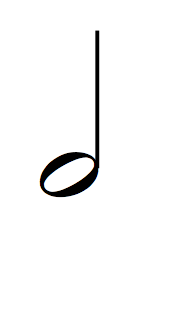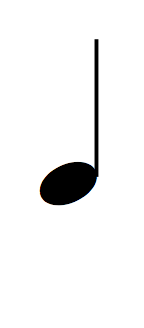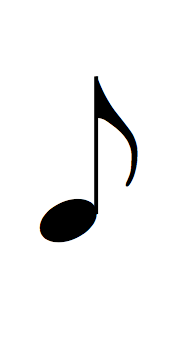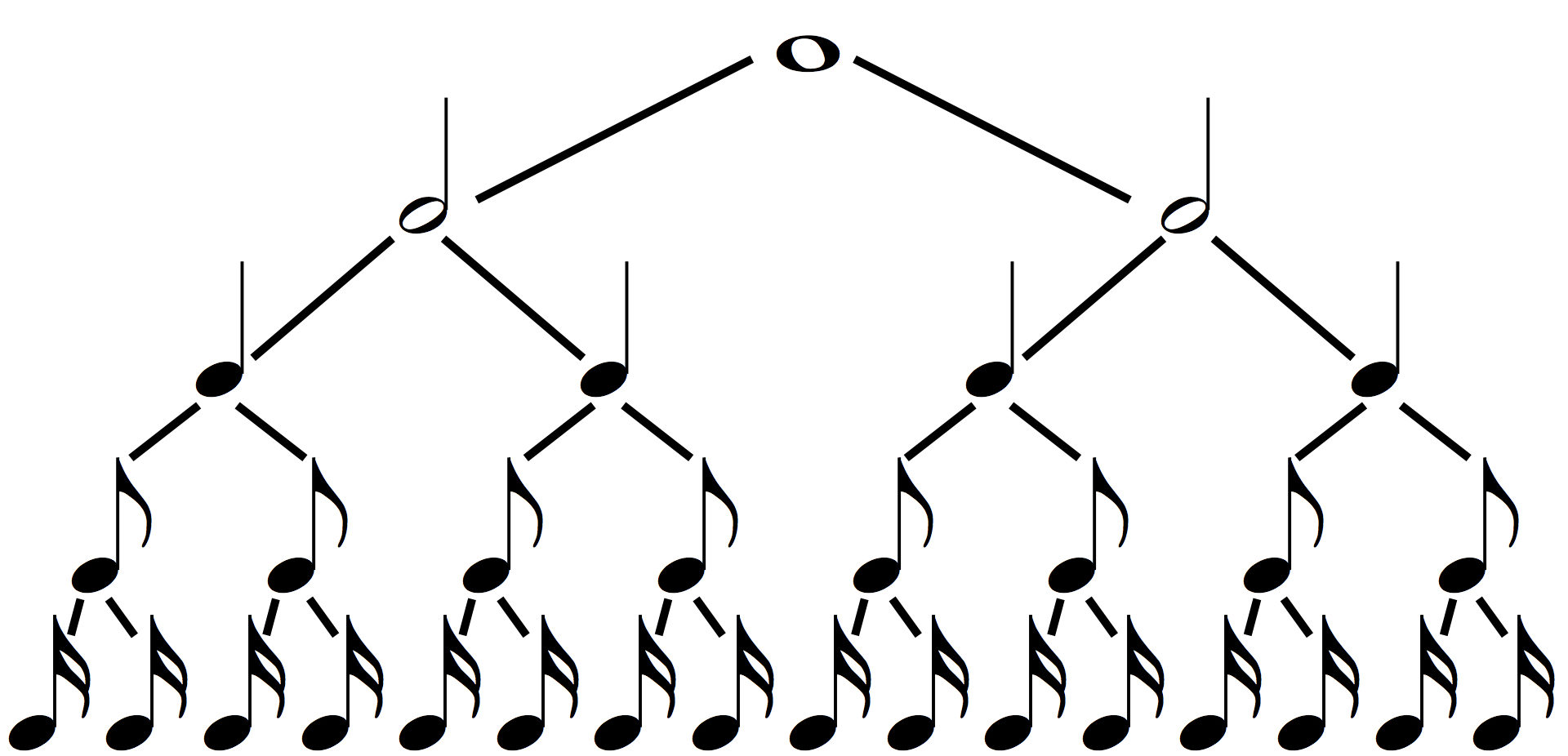Our rhythm notation is proportional. Each basic note value is either double or half the length of another note value. We use different kinds of noteheads and add stems and flags (beams) to show these different note lengths.
Note Values
The whole note is an open notehead by itself.

Twice as fast is a half note which adds a stems to the open notehead.

Twice as fast is a quarter note which then fills in the notehead.

Twice as fast is an eighth note which adds a flag.

Twice as fast is a sixteenth note which adds a another flag.

Our names for note values show the proportions in their names. The eighth note is one eighth of a whole note. To get faster and faster note values we add more and more flags.
Here’s our basic note values on a rhythm tree to show you how they are related. Each horizontal line of notes occupies the same amount of musical time as the single whole note on top.

Know that these rhythmic values do not determine the speed of the music, just how the notes relate at the chosen speed. To determine the speed (tempo) of the music, we have tempo markings like Allegro and Adagio and metronome markings, which tell us how many of a note value happen in a minute.
Time Signatures
To aid our ability to read these notes together we add a time signature at the beginning of the music. These symbols tell us two pieces of information:
- The bottom number tells us the note value being counted. 4 = quarter note, 8 = eighth note, 2 = half note.
- The top number tells us how many the chosen value fit in measure.
So far example the time signature on the left tells us to have 4 quarter notes in measure, and the one on the right tells us to have 6 eighth notes in measure.

To show these measures (or bars), we use measure lines (or bar lines). These are vertical lines in between our notes.
If we want note lengths different than our basic ones, we have three options that expand our note length palette.
Dots
A dot after a note adds half that notes value to the note. A dotted half note is a single note that is equal to the length of a half note plus a quarter note. A second dot (a double dot) adds half of the first dot. A double dotted quarter note is equal to a quarter note plus an eighth note plus a sixteenth note.

Ties
A tie connects two written note values of the same pitch together to sound as one note. We can string a series of notes together with a series of ties to make one long note.

Tuplets
Tuplets allow us to divide a note value by a different number of equal length notes. A set of eighth note triplets tells that we play 3 notes in the space of a quarter note. We mark this notes with the number 3 and if needed, a bracket. There are duplets, triplets, quadruplets, quintuplets, and more.
